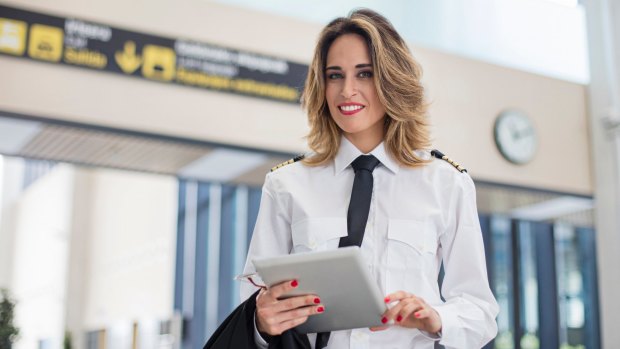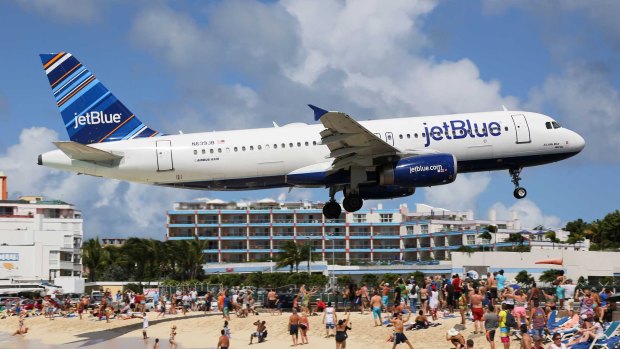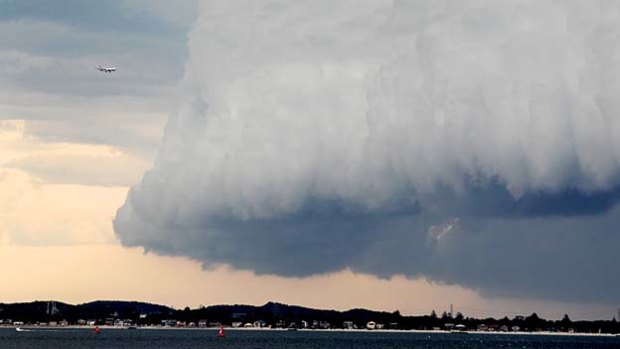This was published 6 years ago
What it's really like to be an airline pilot: Secrets of flying revealed
By Oliver Smith

Airline pilots reveal the secrets of flying.Credit: iStock
From high earnings to emergency landings, airline pilots reveal the secrets of flying.
The autopilot pretty much does everything
"There's no point denying that the autopilot does most of the work," Sam Bray, a Monarch pilot, said. "On a regular flight the autopilot does around 90 per cent of the flying."
Pilots usually handle the landing, but many modern aircraft and airports even possess an "Autoland" system, which is sometimes deployed in thick fog. "Pilots do not even have to see the runway before we touch down at airports such as Heathrow where the facilities are advanced," said Steve Allright, a BA captain.
See also: Why are there so few female pilots?
They earn just as much as you'd imagine
If you're imagining $A237,270 a year, that is.
The British Airline Pilots' Association (BALPA) told us last year that, while a typical starting salary is around £36,000, that has the potential to rise to a whopping £140,000. Given that aspiring aviators must cough up around £80,000 to attend flying school, and that they're responsible for the lives of hundreds of people every day, we think that's fair.
Back during the Qantas pilots dispute of 2011, it was revealed that the average A380 superjumbo pilot's salary was $415,000.
And get some pretty good travel benefits
"Normally, all full-time workers and their immediate family are entitled to complimentary, space-available transportation throughout their carrier's network, with upgrades to first or business class if empty seats permit," says Patrick Smith, a US pilot and author of Cockpit Confidential. "In addition, reciprocal agreements between carriers allow employees of one airline, plus their eligible family members, to fly on another subject to what are called 'ZED fares'. It's a fantastic deal. If I want to fly from Bangkok to Seoul on Korean Air or Thai Airways, it'll cost around $70. New York to Amsterdam on KLM, about $100."
See also: The truth about being a flight attendant
They spend the flight taking photos for Instagram
Well, not all of them, and not the whole flight. But there is a large contingency of commercial airline pilots to be found on the photo sharing website, such as Santiago Borja, who took this dazzling shot in the summer:
Is it legal? That depends on when the photo is taken. Both UK and US regulators say pilots should refrain from all non-essential activities during critical phases of flight, normally below 10,000 feet.
See also: Instagram star - airline pilot reveals what her life is really like
Using you phone will NOT make the plane crash
We're still told to turn off our phones, or put them in "flight mode", during take-off and landing. The general assumption is that their signal interferes with navigation instruments, and could even cause a crash. No chance, said BA's Steve Allright.
Patrick Smith adds: "Aircraft electronics are designed with interference in mind. To date there are no proven cases of a phone adversely affecting the outcome of a flight.
"At least half of all phones, whether inadvertently or out of laziness, are left on during flights. If mobiles were that great a concern, the policy would be more actively enforced."
See also: Why Qantas won't let you pick up your phone if you drop it on board
They sometimes nod off
After the European Aviation Safety Agency (EASA) proposed changes to pilots' working hours, passengers were treated to the revelation that nearly half of pilots have fallen asleep in the cockpit, according to research by the BALPA.
"The truth is, we're exhausted," an anonymous pilot told Reader's Digest in 2013. "Our work rules allow us to be on duty 16 hours without a break. That's many more hours than a truck driver. And unlike a truck driver, who can pull over at the next rest stop, we can't pull over at the next cloud."
They love a tricky landing

Landing in St Martin can be tricky. Credit: Alamy
A clutch of pilots were quizzed about their favourite airports to touch down at. Naples, Madeira, Innsbruck and Gibraltar cropped up frequently, and they all have one thing in common: they are among the trickiest in Europe, with pilots often needing special training before they're allowed to tackle them.
You might not be told when there's a problem with the plane
"We tell passengers what they need to know," Jim Tilmon, a retired American Airlines pilot, told Reader's Digest in 2013. "We don't tell them things that are going to scare the pants off them. So you'll never hear me say, 'Ladies and gentlemen, we just had an engine failure,' even if that's true."
Patrick Smith adds: "Being blunt about every little problem invites unnecessary worry, not to mention embellishment. But with even an outside chance of an evacuation in mind, you have to be kept in the loop."
But don't be surprised if you hear a terrifying announcement
While pilots do their best not to cause panic, they occasionally fail. Miserably. This year a Ryanair captain was heard to utter: "We have ice on the wings and we don't want to die." In 2014 a Monarch pilot told fliers that a technical problem could have led them to "a quick, watery grave". Andl readers have heard their fair share of thoughtless announcements, including the following:
"Ladies and gentlemen we shall be making an unscheduled landing and steep approach to Tampere airport, the plane is on fire, thank you".
"Ladies and gentlemen, we were just struck by lightning."
"Ladies and gentlemen, there is the largest storm cloud formation I have ever experienced. Please fasten your seat belts. Cabin Crew, stow all loose items and take your seats."
"Good afternoon. You will have noticed that it's a bit hairy in the skies and the wind is against us. We require a steep take off out of here and it will be tricky but hold on to your seats, it's Friday night and I've got a wedding reception to go to. Over and out."
They're put under pressure to carry as little fuel as possible
Airlines will deny it, of course, but that 2013 Reader's Digest report suggested otherwise.
"I'm constantly under pressure to carry less fuel than I'm comfortable with," said an anonymous pilot. "Airlines are always looking at the bottom line, and you burn fuel carrying fuel. Sometimes if you carry just enough fuel and you hit thunderstorms or delays, then suddenly you're running out of gas and you have to go to an alternate airport."
Emergency landings happen all the time
Rather than being the rarity you might presume, figures released last year revealed that Heathrow Airport alone experiences around one emergency landing a week. Fifty-one occurred in 2013, 40 in 2012, 54 in 2011, 66 in 2010, and 55 in 2009 - a total of 266 in five years.
Lightning strikes are common, too (but don't worry about it)

According to Patrick Smith: "Planes are hit by lightning more frequently than you might expect - an individual jetliner is struck about once every two or three years on average - and are designed accordingly. The energy does not travel through the cabin electrocuting the passengers; it is discharged overboard through the plane's aluminium skin, which is an excellent electrical conductor. Once in a while there's exterior damage - a superficial entry or exit wound - or minor injury to the plane's electrical systems, but a strike typically leaves little or no evidence." God bless the Faraday cage.
See also: Female pilot's glamorous life becomes Instagram hit
Sign up for the Traveller newsletter
The latest travel news, tips and inspiration delivered to your inbox. Sign up now.